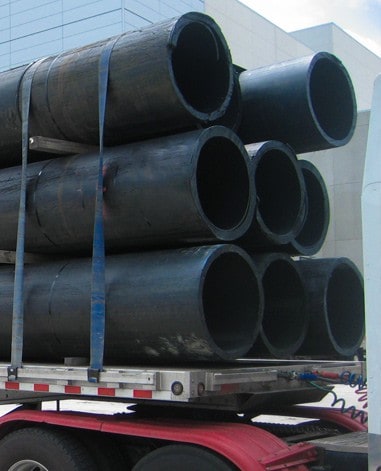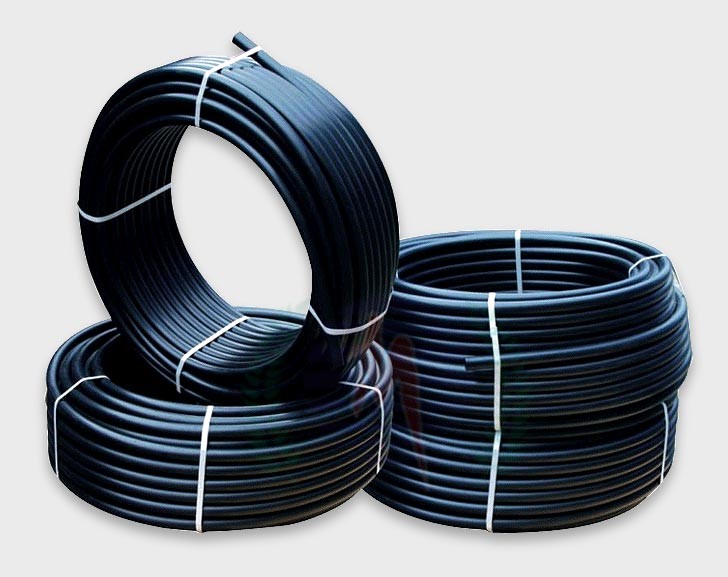Essential Reasons to Choose hdpe pipe suppliers Midland TX for Reliable Sourcing
The Crucial Steps for Successful Installment of HDPE Pipeline in Your Following Project
Successful setup of HDPE pipeline requires careful planning and implementation. Trick actions include assessing job needs, preparing the site, and selecting appropriate signing up with strategies. Each phase plays an important function in ensuring the stability and performance of the pipeline. Recognizing these necessary steps can considerably affect the overall success of the task - Pipe Manufacturing Midland TX. The subtleties of each action may hold the secret to conquering typical challenges faced during installment.
Recognizing the Perks of HDPE Pipeline
High-density polyethylene (HDPE) pipe offers numerous benefits that make it a favored option for different applications. Its high resistance to rust and chemicals assurances toughness popular environments, greatly expanding the life expectancy of installations. Additionally, HDPE's adaptability enables for less complicated setup, especially in challenging surfaces, as it can bend without damaging. The lightweight nature of HDPE pipe simplifies transportation and handling, decreasing labor costs during installment.
Furthermore, HDPE pipe is recognized for its low friction coefficient, which improves liquid flow and reduces energy usage. Its smooth building and construction decreases the threat of leakages, contributing to much better source management and environmental management. Furthermore, HDPE is recyclable, aligning with sustainable techniques and lowering environmental effect. Overall, the mix of toughness, versatility, and eco-friendliness makes HDPE pipe a superior option for a vast array of projects, from water circulation to industrial applications.
Planning Your HDPE Pipeline Installment
When planning an installation of HDPE pipe, mindful consideration of a number of vital factors is essential to protect an effective project. Job supervisors must assess the details requirements of the pipeline, consisting of the meant use, flow rates, and ecological problems. Comprehending these criteria will certainly assist the selection of proper pipe dimensions and material grade.
Next, timelines need to be developed, factoring in procurement routines and any type of possible hold-ups. Control with neighborhood authorities for authorizations and regulative conformity is likewise important. Additionally, a thorough spending plan needs to be prepared, encompassing all prices connected with materials, labor, and equipment.
It is crucial to engage a qualified group experienced in HDPE pipeline setup. Their competence will certainly assist alleviate dangers, guarantee adherence to sector criteria, and eventually add to the project's success. Extensive preparation lays the foundation for a smooth installment process and lasting performance of the HDPE piping system.
Preparing the Website for Installment
Appropriate website preparation is vital for the effective installment of HDPE pipeline. Before installment begins, the website needs to be thoroughly analyzed to ensure it meets all necessary needs. This consists of checking the ground for existing frameworks, utilities, and prospective threats that can restrain the installation procedure.

Proper altitude and positioning must be established to maintain a constant slope for drainage purposes. Correct drainage around the installment website is also critical to stop water build-up, which can cause difficulties down the line.
Methods for Joining HDPE Pipelines
Accomplishing a trustworthy link between HDPE pipelines is crucial for making sure the integrity and long life of the setup. Numerous methods exist for joining these pipelines, each suited for various job requirements. Blend welding is just one of one of the most common methods, using warm to bond the pipeline ends together, developing a seamless and durable connection. This technique can be additional classified right into outlet fusion and butt combination, depending upon the pipe arrangements.
Mechanical installations are another alternative, utilizing clamps and threaded ports to join sections of HDPE pipeline. While typically faster to install, they might need additional upkeep with time. Electrofusion is a specific technique that involves utilizing electrical present to warmth and fuse the pipes via specially made fittings, making certain a strong bond. Picking the suitable joining strategy is essential, as it directly impacts the total performance and integrity of the HDPE piping system in the designated application.
Examining and Assessment of Installed Pipes
The screening and assessment of set up HDPE pipes are vital to ensuring their performance and long life. This procedure includes aesthetic evaluation techniques, stress testing approaches, and leak discovery treatments to determine prospective concerns. By using these approaches, specialists can verify the stability of the setup prior to it is taken into use.
Visual Assessment Techniques
Using reliable aesthetic examination techniques is vital for ensuring the stability of mounted HDPE pipes. Assessors ought to systematically check out all visible sections of the pipeline to recognize any type of signs of damage, misalignment, or inappropriate setup. Secret indicators to evaluate include joint stability, surface area irregularities, and connections. Assessors might utilize devices such as magnifying glasses or video cameras to enhance presence and information. It is necessary to look for indicators of ecological tension, such as twisting or excessive bending, which could compromise performance. Consistent documentation of searchings for allows for tracking changes over time and aids guide required repair services. By adhering to well my blog established aesthetic evaluation methods, task groups can notably decrease the danger of future failures and ensure lasting integrity of the piping system.
Stress Examining Approaches
Visual examination works as a preliminary action, yet it is not adequate on its very own to ensure the efficiency of mounted HDPE pipes. Pressure testing techniques are essential for guaranteeing the stability of these systems. Typically, hydrostatic screening is utilized, where the pipelines are filled up with water and based on pressure degrees above the desired operating stress. This approach helps recognize weaknesses or prospective leaks. Pneumatic screening can also be used, although it carries higher threats due to the compressibility of air. No matter the approach picked, adhering to industry requirements and safety procedures is crucial. After performing pressure tests, thorough documentation is essential to validate the results and validate that the setup fulfills all operational needs before proceeding to the following phase of the project.

Drip Discovery Procedures
How can one assure that set up HDPE pipelines are devoid of leakages? Efficient leakage detection treatments are essential to safeguard the honesty of the you can try these out system. Aesthetic assessments ought to be performed, looking for signs of water buildup or dirt disintegration around pipe joints. Following this, pressure screening can confirm the system's stamina. A typical method is the hydrostatic test, where water is presented under pressure, checking for decreases that suggest prospective leaks. Additionally, advanced modern technologies, such as acoustic sensing units or infrared thermography, can detect leakages that might not be visible. Regular monitoring and maintenance more add to the durability of HDPE pipelines, ensuring they remain leak-free throughout their operational life-span. Correct documents of these procedures is important for conformity and future referral.
Maintenance Tips for Long-Term Efficiency
To assure the long life of HDPE pipelines, developing a regular examination schedule is important. This proactive strategy permits the very early discovery of potential problems, minimizing costly fixings. Additionally, carrying out correct cleaning methods will certainly help preserve peak efficiency and prevent accumulation that can affect performance.
Normal Evaluation Arrange
HDPE pipelines are recognized for their sturdiness and resistance to deterioration, developing a routine inspection timetable is vital for guaranteeing their long-term efficiency. Routine examinations assist determine prospective problems such as leakages, joint honesty, and ecological impacts that may influence the pipeline's functionality. It is recommended that examinations happen at the very least biannually, or a lot more frequently in atmospheres with extreme conditions. hdpe pipe fittings Midland TX. Throughout these look at here now assessments, visual checks must be carried out to identify indicators of wear or damage. Additionally, utilizing technology such as ultrasonic screening can supply further insights into the pipe's condition. By applying an organized inspection schedule, job supervisors can proactively resolve problems, therefore prolonging the lifespan of HDPE pipelines and preserving system performance
Correct Cleaning Techniques
Proper cleansing methods play an important role in keeping the lasting efficiency of HDPE pipelines. Routine cleaning stops the build-up of debris, debris, and biofilm, which can lead to blockages and lowered flow performance. Operators should use techniques such as high-pressure water jetting or foam cleansing to properly get rid of pollutants without harming the pipeline surface area. It is essential to avoid using extreme chemicals that may break down HDPE material. In addition, arranged upkeep checks must include aesthetic examinations for any indicators of wear or damage. Properly trained employees should accomplish these cleaning procedures, ensuring conformity with safety and ecological policies. By executing these practices, the life expectancy of HDPE pipes can be substantially expanded, ensuring optimal performance throughout their functional life.
Frequently Asked Inquiries
What Are the Environmental Effects of HDPE Pipe Manufacturing?
The environmental impacts of HDPE pipe manufacturing consist of greenhouse gas discharges, power intake during manufacturing, prospective plastic contamination, and challenges in recycling. However, HDPE's durability and resistance to deterioration can mitigate some ecological issues.
How Does HDPE Pipe Compare to Various Other Materials?

What Tools Are Necessary for HDPE Pipeline Setup?
Necessary devices for HDPE pipeline setup include a fusion equipment, pipe cutters, shovels, gauging tape, and security equipment. Proper devices warranties effective, risk-free handling and installation, contributing to the project's total success and integrity.
Are There Any Kind Of Specific Regulations for HDPE Pipeline Setup?
Certain guidelines for HDPE pipe installation differ by region, typically governed by regional, state, or federal codes. Compliance with these policies warranties safety, environmental protection, and capability, making adherence vital for successful task outcomes.
Can HDPE Pipes Be Recycled After Use?
Yes, HDPE pipes can be reused after use. Their thermoplastic nature enables reprocessing, making them ideal for recycling into new products. This sustainability aspect contributes to ecological conservation and advertises circular economic climate methods in building.